Like it or not, at one point or another you’ll probably have to deal with a negative customer comment that’s been published online
Did you know, as many as 94% of customers say that a negative review convinced them not to do business with a brand?
We can’t underestimate the importance of online reputation management.
Like it or not, at one point or another you’ll probably have to deal with a negative customer comment that’s been published online. This means you need to learn how to respond to such criticism. After all, it’s vital you react to these comments in a timely and thought-out manner, as this is the only way you can adequately protect your online reputation.
In light of this, we’ve compiled five real-life examples of how brands manage their online reputation.
Spoiler alert: all these techniques have one thing in common – these companies use negative customer comments, concerns and queries to not only help the original commenter but also to demonstrate to other prospects that you value and respect the opinions of your consumers.
1. Nike support
The bigger your brand gets, the harder it is to find the time to complete all your daily tasks. From mastering the art of content marketing to conducting competitor research to handling customer support emails, it’s a challenge to find a spare hour to manage your online reputation.
If this is something you’re struggling with, take a leaf out of Nike’s book and create a separate support handle. In other words, Nike has a separate Twitter account known as @NikeSupport, which is purely dedicated to handling customer queries.
If you haven’t already, launch a social media account that only handles customer service issues. This works wonders for keeping customer comments and queries in one place, and as such, increases the chances of you getting back to consumers in a timely fashion.
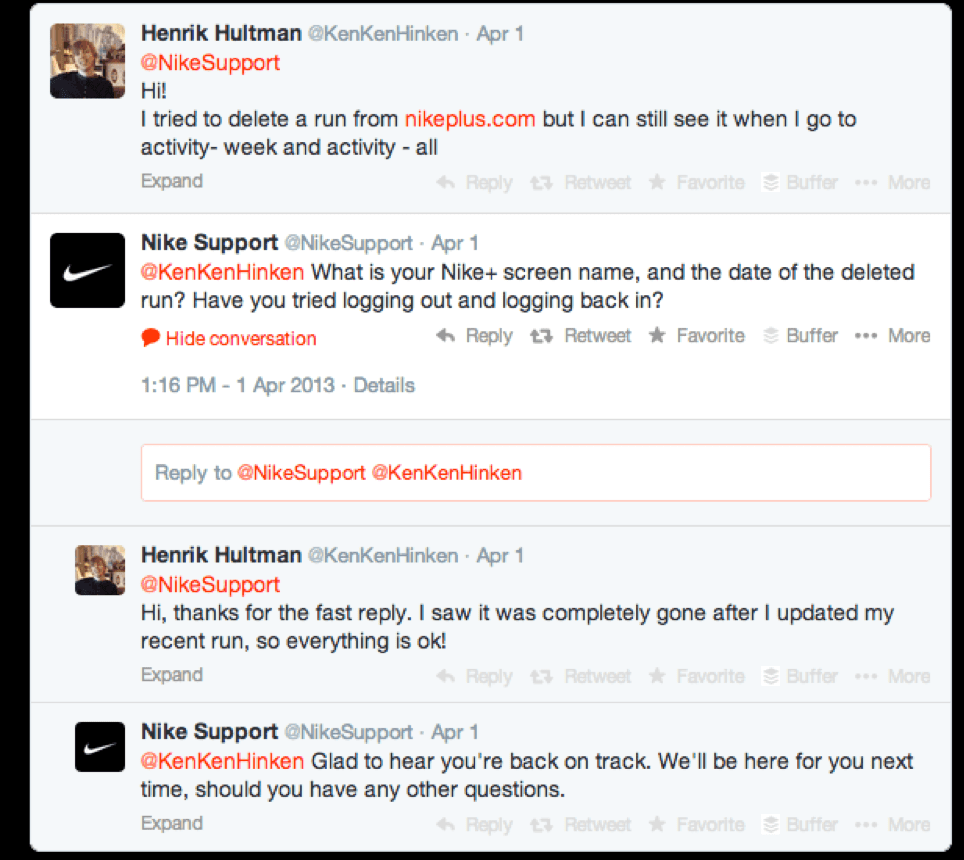
2. Joe Dough Sandwich Shop
Sometimes, you can respond to customer criticism with humour. However, it’s down to you to decide whether this method is appropriate given the style and tone of your brand.
On the whole, the only time you should crack a joke in response to negativity is if the customer complaint isn’t overly serious. So, think long and hard before using this method – the last thing you want to do is accidentally trigger a backlash!
Conversely, when done well, humour can diffuse what would otherwise be an awkward and challenging situation.
Take Joe Dough Sandwich Shop, for example; they used humour as a fabulous way to respond to a bad Yelp review (see pic below). This intelligent comment not only made light of the situation, but it also worked wonders for boosting their profile online.
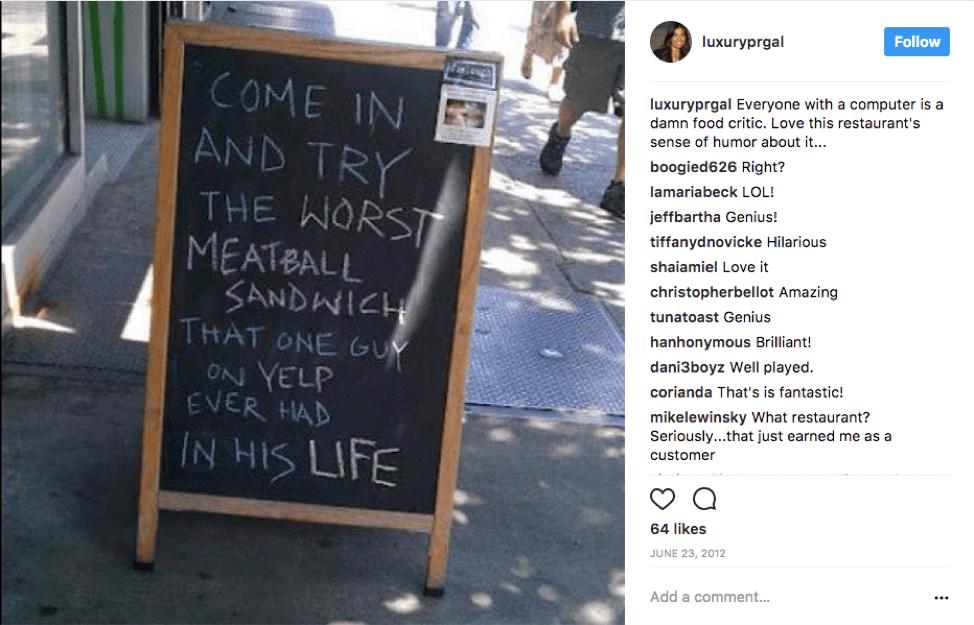
3. Wine Country Tour Shuttle
If a consumer is particularly angry, then sometimes even the politest of responses highlighting a genuine solution still won’t be enough for the disgruntled soul.
If you’re suffering from a scenario like this, all you can do is thank them for their comments, address the issues directly, explain how you’ll rectify the problem, and then focus your time and energy elsewhere.
However, you need to bear in mind that when you publish a response to an unreasonable consumer, you aren’t just posting to appease the original commenter. Instead, you’re showing anyone else who might be reading these complaints that you’re competent when it comes to handling these kinds of customer queries.
Take the below example of Wine Country Tour Shuttle; the manager did a fantastic job in responding to this review. Needless to say, you could certainly learn a thing or two from these screenshots:
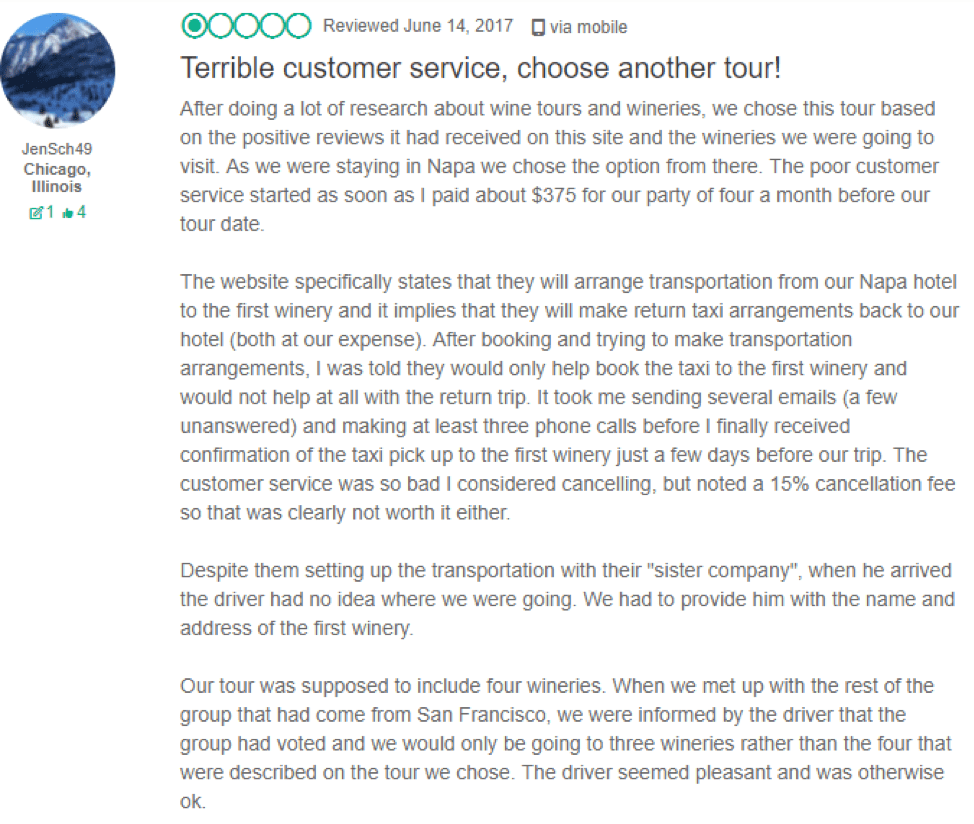
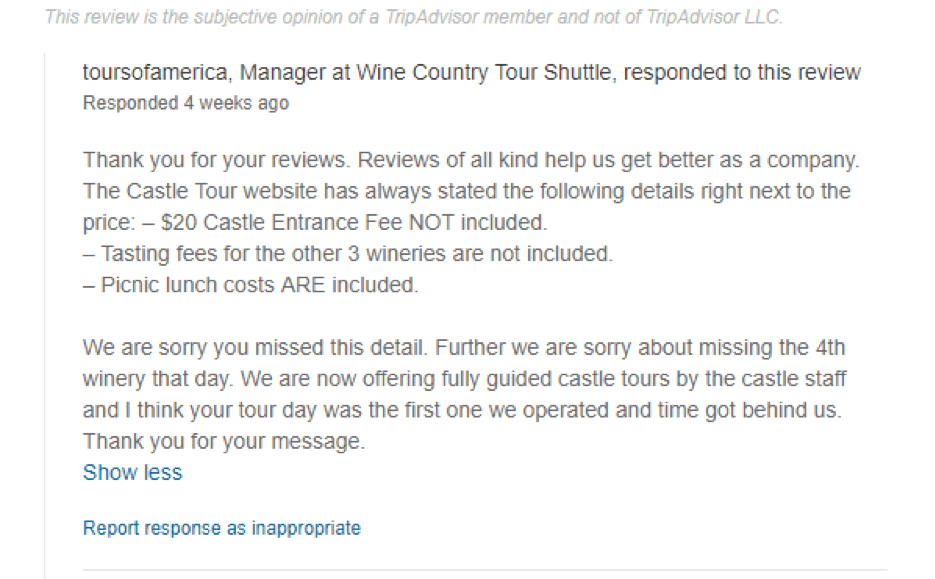
4. Stamford Plaza Brisbane
Stamford Plaza Brisbane is an excellent example of how management should handle complaints published by someone who’s usually a loyal customer.
Queries like this are far more likely to raise genuine issues, so you would be wise to listen to what they’re saying and then provide a thorough response with an actionable solution.
This is why we love the following example:
- This answer starts with a simple “thank you.” By doing this, they immediately communicate to the commenter and anyone else who’s reading, that they’ve listened to the customer and that they respect their opinion.
- They then move onto focus on the positive experiences the commenter mentioned (this serves to highlight that not everything about their stay was terrible).
- From there, the manager explains how they plan to address these issues to ensure the same problem doesn’t occur again.
Voila! This is a superb structure you can use to respond to similar comments.
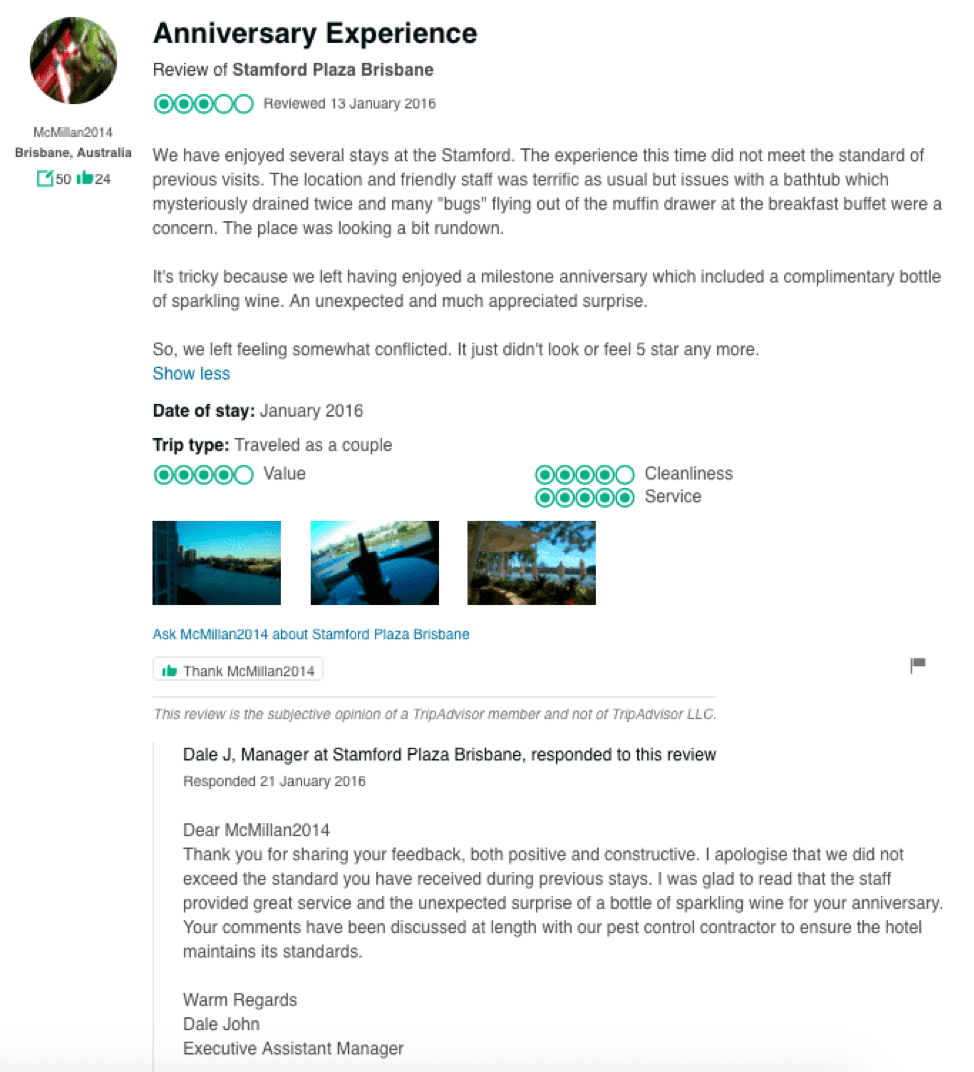
5. Forest Grove Veterinary Clinic
If you’re working in a niche where emotions run high like – healthcare, veterinary clinics, counseling, education, and so on, there’s a good chance you’ll receive all kinds of negative reviews.
After all, when people are emotionally involved with your products and services, they’re far more likely to view your shortcomings in a way that evokes passion and in some cases anger and upset.
This can sometimes lead to the consumer questioning the integrity of your brand. If this happens to you, respond in a way that’s both professional and classy. This is a chance to reiterate the values of your company in addition to highlighting any relevant protocols and procedures in place that ensure your customers receive high-quality service.
Then all that’s left to do is to say what you’ll work onto further enhance your services (in light of their comments). You need to reassure them you’ll rectify any outstanding flaws to guarantee this problem doesn’t ever happen again.
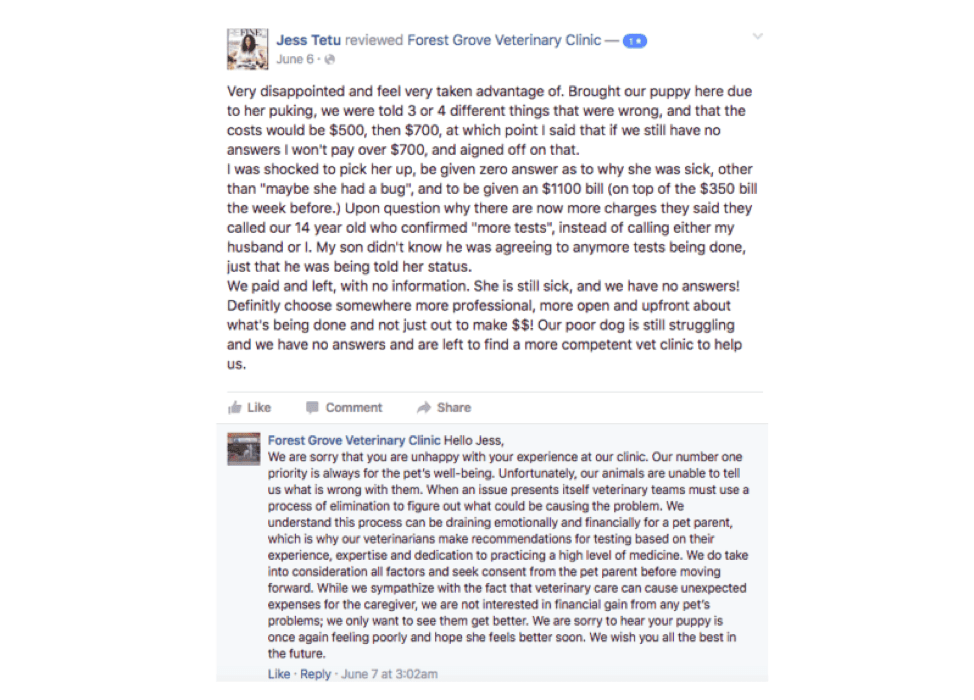
Final thoughts
As you can see, there are many ways you can manage your online reputation. With customer review platforms like Trustpilot, you can add an increased level of credibility to your brand.
Rather than feeling dejected after receiving negative feedback, you should take it as an opportunity to prove just how much you value your customer’s opinions with timely and courteous responses. Moreover, by taking constructive criticism into account, you can prompt positive changes to your business and continually improve your product/service offerings.
And there’s more good in bad reviews. You don’t necessarily want a perfect five out of five-star rating, as this can prompt customers to think the comments are fake. This isn’t surprising when you consider that the average rating on Yelp is 3.65 – a score like this suggests that the positive comments are more likely to be authentic.
All you can do as a business owner is swot up on how you can best handle these grievances. Hopefully, the above examples gave you a solid idea on how to handle these challenging situations.
Each time you receive criticism online, please feel free to refer back to this article to better construct a response that preserves the pristine reputation of your brand.
